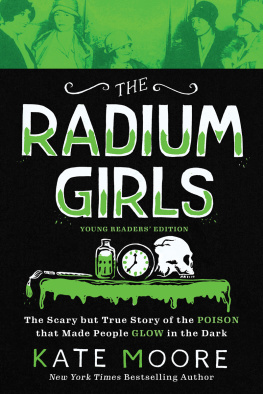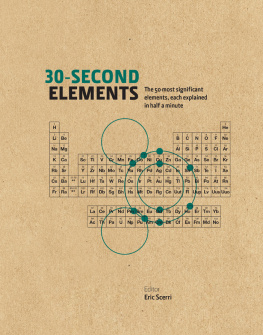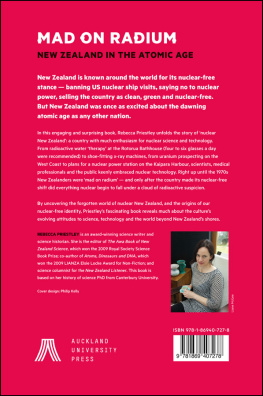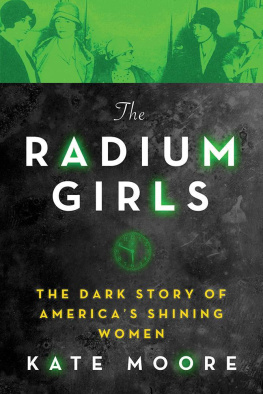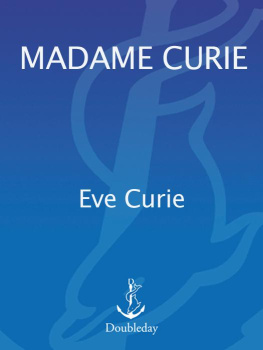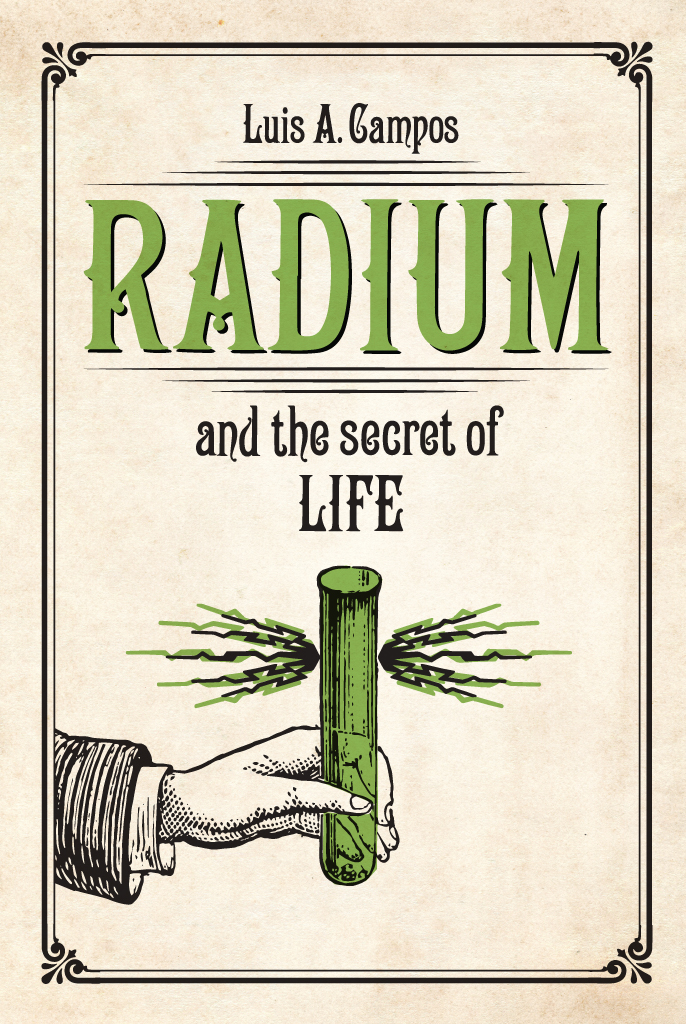Luis A. Campos
Luis A. Campos is associate professor of the history of science at the University of New Mexico.
All rights reserved. Published 2015.
Campos, Luis A., author.
Radium and the secret of life / Luis A. Campos.
Includes bibliographical references and index.
ISBN 978-0-226-23827-2 (cloth: alk. paper) ISBN 978-0-226-23830-2 (e-book) 1. Radium. 2. Genetics. I. Title.
QD 181. R 1 C 36 2015
This paper meets the requirements of ansi/niso z39.48-1992 (Permanence of Paper).
The man of science must have been sleepy indeed who did not jump from his chair like a scared dog when, in 1898, Mme. Curie threw on his desk the metaphysical bomb she called radium. There remained no hole to hide in. Even metaphysics swept back over science with the green water of the deep-sea ocean and no one could longer hope to bar out the unknowable, for the unknowable was known.
Henry Adams,The Education of Henry Adams: An Autobiography
Unfathomably rare and intensely powerful, glowing in the dark and utterly unaffected by any outside force of nature as it gave off rays of unprecedented energy, radium was perhaps the most wonderful and perplexing thing the modern world had ever seenor had never seen, given that only the barest pinch of pure radium existed at the dawn of the twentieth century. The modern world had certainly heard about radium, however. Helping to overturn established ideas of atomic constitution and atomic behavior even as it gave birth to an immensely popular craze, radium challenged scientist and common man alike, and journalists scrambled to capture all its marvelous implications.
The eighty-eighth element in the periodic table was stunningly and starkly new. For melancholic man of letters Henry Adams, as for many others, the shock was indescribable: Radium denied its God, he remarked, or,
Depending on ones cast of mind, the discovery of radium could be said to illustrate the dawning of a new epoch in chemistry, bringing investigators nearer than ever before towards getting a glimpse of the nature of things, as the Lancet reported in 1903, or to so challenge preconceived understandings of the world that it was useful for explaining the pragmatic meaning of truth, as James believed. Either way, one of the most striking features of those early years following the discovery of radium is the curious appearance of a metaphysics, and an attendant mode of metaphorical description, that suffused radioactivity with a peculiarly biological cast. Not only were radioactive phenomena characterized in quasi-biological ways from the earliest days, by their discoverers and by others, but radium itselfby far the most powerful and most popular of the radioactive elementswas often described as a half-living element in scientific and popular texts alike. Radium was sometimes even accorded vitalizing powers, an ascription that became part and parcel of the radium craze that swept the first decade of the twentieth century. While the earliest discoveries in radioactivity were immersed within rich sets of discourse that overdetermined radiums living aura, the popular craze that followed radiums discovery granted vitality and life a radioactive glow all its own.
Long before the hydrogen bomb indelibly associated radioactivity with death, many botanists and geneticists were eagerly remarking that radium held the key to the secret of life. No mere chunk of glowing earth, this most spectacular of elements was also, above all else, an ideal site for unexpected coincidences and fruitful confluences in the life sciences, for an overlapping of discourses and ontologies that persisted throughout the early twentieth century and proved as productive as it was provocative. Cross-fertilizing and recombining, these initially provocative connections between the radioactive and the living propagated over the decades, across disciplines, and between public and scientific discourses. These crossovers led to conceptual and experimental consequences and involved (at least in passing) many of the major biological questions of the day: the origin of life, the physiological effects of radiation, the nature of mutation, and the structure of the gene.
Emerging at a particular moment at the turn of the century and weaving together already-extant discursive strands and experimental traditions aimed at modifying and understanding life, this intersection between the physical and the biologicalbetween the radioactive and the livingtransmuted over the first half of the twentieth century, throwing off various new experimental systems and approaches. By critically engaging with the texts, narratives, and images generated both by scientists and by commentators of the day, I follow the varied and intertwining ways by which radium came to life, how it played a significant role in the history of biology in the early twentieth century, and, in particular, how it contributed in surprisingly revealing and novel ways to the history of genetics.
Although it emerged in the context of the radium craze at the dawn of the century, this distinctive and provocative overlapping of metaphor and metaphysics, of terminology and technique, and of the living, nonliving, and even half-living proved remarkably productive in experimental terms and ultimately led to key insights into the origin of life, the nature of mutation, and the structure of the gene. Four revealing case studies form the core of my analysis as I examine how radium served for successive biological experimenters as vitalizer, stimulant, mutagen, and analytic tool.
This history does more than cast the established narratives of classical and radiation genetics in an entirely new light. In telling the story of how radium remained an epistemic tool, even as it eventually ceased to be an experimental one, I recount in later chapters how this powerful reworking of radiums role contributed to a crucial and widely recognized, but heretofore unanalyzed, shift in the meaning of mutation itself, from organism and chromosome to gene. Radium was thus not only a primary and vital part of the arsenal of early twentieth-century mutagens, but also played a constitutive role in the historical genetic redefinition of mutation, a redefinition that in turn, to date, has helped to obscure the central place of radium in the history of classical genetics.
Moreover, as the role of atom of life shifted from radium itself to microbes, mutant organisms, chromosomes, and finally genes, the trope of the secret of life moved ever inward. From the initial discovery of the new element in 1898 to the putative discovery of the secret of life with the elucidation of the structure of DNA in 1953a midcentury moment by which the ties that had once bound metaphor and experimental practice together so tightly had decayed to mere discursive residuesthis study traces the half-life of this transmuting connection between radium and life.
An introductory chapter sets the stage, finding the roots of this powerful association between radium and life in the earliest biological metaphors and metaphysics of early radioactivity research; in preexisting discursive traditions and popularization practices relating heat, light, electricity, thermodynamics, and notions of a living atom to life (all of which were easily subsumed under the new radioactive umbrella); in the popular radium craze of the first decade of the twentieth century; and in the aftermath of controversy regarding other types of rays supposedly produced by living things. Radium, in short order, became



